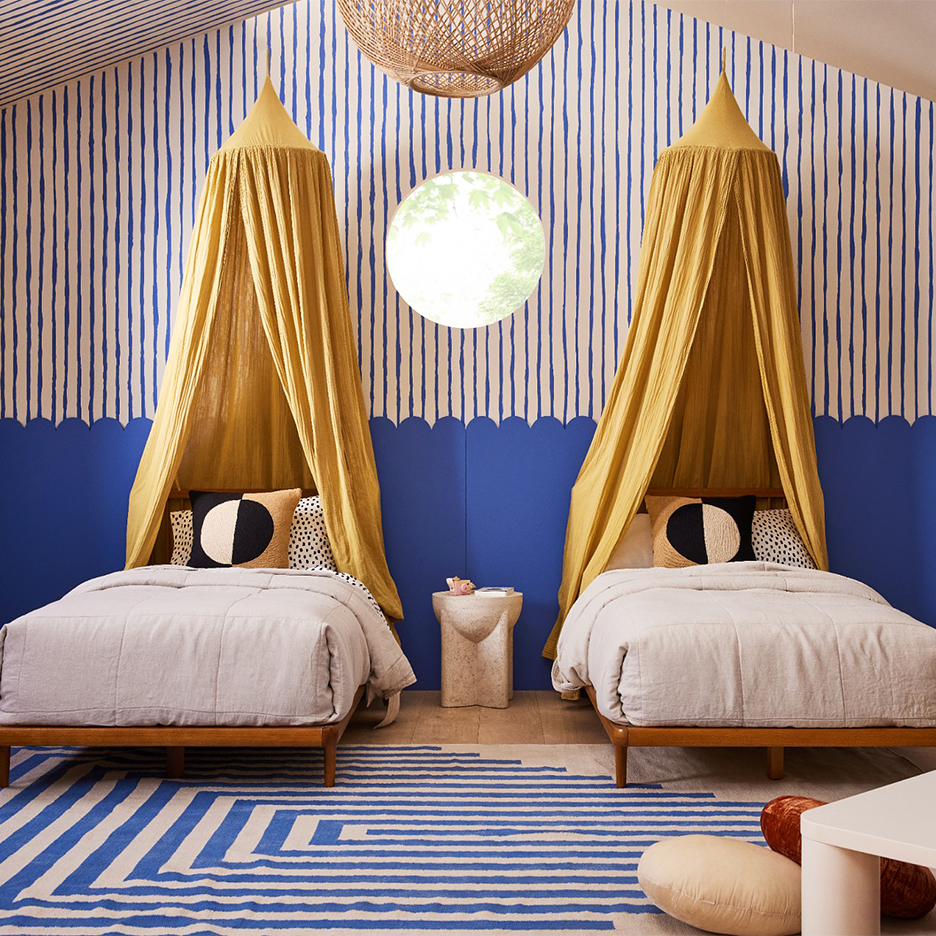We may earn revenue from the products available on this page and participate in affiliate programs.
Every designer loves a good challenge—especially Sarah Sherman Samuel. When West Elm approached her about dreaming up the ultimate kids’ room, the Grand Rapids, Michigan–based creative got to work, envisioning a bedroom–play area hybrid that was constructed in West Elm’s Brooklyn studio, workshop-elf style—with Samuel overseeing every detail via emails, phone calls, and many Zoom meetings.

What began with a graphic rug as a starting point soon turned into a space meant to spark kids’ wild imaginations (“The canopies could become rocket ships,” Samuel notes) through playful shapes, layered patterns, and expressive color. But as it turns out, it’s actually what she didn’t include that makes the room so special. We gathered Samuel’s top four tips on what is (and isn’t) necessary for designing a happy zone for your little one and how she brought the project to life.
Less Is More Calming

Kids’ imaginations can be set free “by leaving a room more open-ended,” explains Samuel, who didn’t cover the walls with art or use large-scale patterns but instead opted for simple geometry in the form of painted striped walls, circular windows, and sweeping arches that create zen-worthy focal points that just might encourage calm. “Their eyes can dance around,” says the designer, with “plenty of space for them to rest and pause as well.”
Take Everything Up a Notch

Playing with scale is another Samuel trick. “Instead of keeping all the furniture at the same height, I like to add drama by going vertical,” she says. Twin canopies and lofty arched nooks bring the sight lines all the way up to the ceiling—“making the room feel grand, especially to a little kid” and providing plenty of prime hiding spots—while books and essentials are still accessible at their level.
A Streamlined Palette Still Makes a Statement

Samuel was most inspired by her daughter’s current color crush (blue, if you couldn’t guess), so rather than using a wide range of bold shades in the design, she let stripes and scallops in the same striking cobalt take center stage. Layering in neutral, textured materials—like grasscloth wallpaper, wood bookshelves, and lidded rattan baskets—helped to balance things out. (In her own home, closed storage is one of Samuel’s organization must-haves, and there’s a whole closet off the family room dedicated to wrangling toys and games out of sight.)
You Don’t Have to Overcommit to a Theme

While some parents might jump at the chance to fulfill their child’s astronaut or princess fantasies, going all out might not be the best option once it’s time to refresh the room to match your mini’s ever-changing preferences and needs. “If you do a superhero-themed bedroom, there is a good chance you will need to update it in a couple years,” says Samuel, who suggests starting with one item they love—a toy, book, or piece of art—and then build around that. “I like to think of a kid’s room as an extension of the rest of the house, but a little more whimsical.” Considering we would happily move into her magical space, we couldn’t agree more.
Want to read about more kid-approved design tricks, creative organization ideas, and family-friendly living solutions? Sign up for our weekly newsletter!
